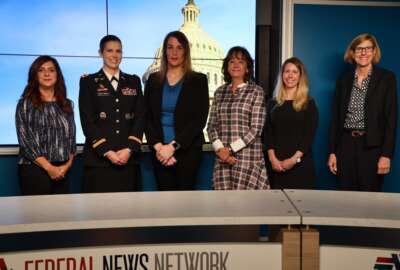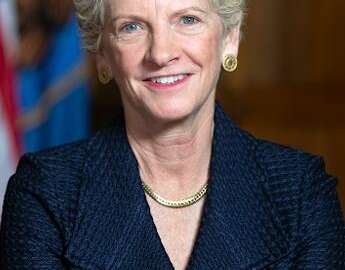Keeping women in government takes reimagining solutions
Leaders say if agencies truly want women to succeed they need to drop the one-size-fits-all approach.
As an Air Force veteran, spouse, mother and caregiver, Jolisa Webb Dudley has had to make difficult decisions about her career. Her aspirations changed with each “season” of her life, an experience she said is common for women in the federal government and military.
Choosing whether to pursue a more demanding promotion, or to be more available to their children, puts a disproportionate amount of pressure on women. Panelists at Wednesday’s Women in NOVA event, sponsored by AFCEA, said if agencies truly want women to succeed, they need to acknowledge these pressures and not attempt a one-size-fits-all approach.
Dudley is the director of the Customer Experience Strategy in the Office of Resolution Management, Diversity & Inclusion at the Department of Veterans Affairs, which collaborated with the Veterans Experience Office to look at intersectionality, because few people identify themselves through a single lens.
“When you’re dealing with discrimination, or thinking of discrimination, sometimes I don’t know whether things that are happening to me are happening because I am a woman or because I’m Black? … And now, as I get of a certain age, I don’t know if that’s it, either?” she said.
As a Black woman in the Air Force, Dudley said she personally did not have any “horror stories,” but she did attend a historically Black university for her ROTC detachment, which shaped some of her expectations.
VA’s 412,000-plus workforce is about 60:40 women to men until you reach the GS-13 level, and by the time you reach the Senior Executive Service the ratio has flipped, she said. Exit surveys can reveal a lot.
“Women sometimes don’t feel like they’re getting the recognition they need, that they deserve,” Dudley said. “Relationships are very important for women in the organization so if they don’t feel like they have good relationships with their supervisor or their manager or their peers, that can be problematic. And we’re also running into some issues related to women’s thoughts about whether they’re actually qualified for the position, based on the fact that they’ve applied numerous times and they’re still not getting selected.”
She and Llewellyn “Don” Means Jr., director of the Operations and Infrastructure Center at the Defense Information Systems Agency, both advocated for leaders to be vulnerable and authentic with their staff. Sharing one’s own experiences can improve relationships and demonstrate unconscious biases that can hold diversity, equity, inclusion and accessibility efforts back.
“Everybody has unconscious bias, that’s just the way we categorize things as humans. And it can impact decision-making quality depending on how you deal with it,” he said.
His colleague Serena Chan, senior technical advisor for the Operations and Infrastructure Center at DISA, said homogeneity also hampers decision-making. Having different perspectives means her team is less likely to succumb to groupthink and overlook key pieces of information because it challenges people.
“The teams, they get the ability to focus more on the facts from the data and they process the facts and the data more carefully because now you’re scrutinizing it a little bit more. There’s consideration for the different perspectives that everyone’s bringing to the table, and all these new ways of looking at the problem can spur innovation,” she said.
Panel moderator Debbie De La O, of Leidos Defense, said it reminded her that solutions are better when one considers all parties affected by the problem. That advice could be given to an 18-member task force VA convened in April to look at DEIA. Dudley said some of the findings revealed alarming gaps in the customer experience side, using homelessness assistance as an example. She said the fastest growing population of veterans is Black and brown females, and if VA staff are still delivering services under the assumption that the customer they are dealing with is a Vietnam War-era white male, the results will be unsatisfactory.
“They don’t think about the woman who, because she was assaulted or has some type of trauma can’t go into a shelter, it’s not going to be safe for her on the street with her kids. And so what she does is she couch surfs, she goes from friend’s house to friend’s house to family member’s house and sleeps on their couch overnight because that’s the only way she feels safe. But indeed, she is still homeless,” Dudley said. “So we have to get this right.”
Copyright © 2025 Federal News Network. All rights reserved. This website is not intended for users located within the European Economic Area.
Amelia Brust is a digital editor at Federal News Network.
Follow @abrustWFED






